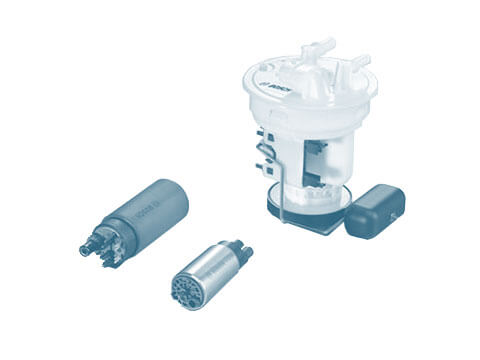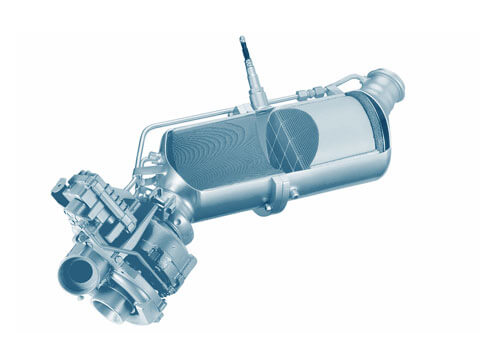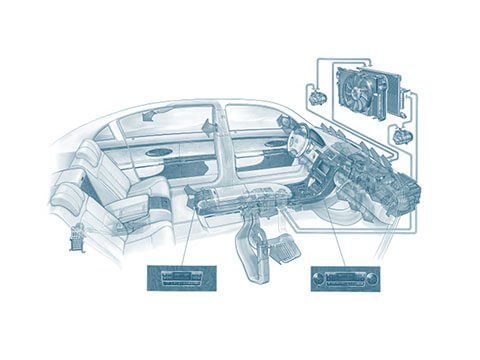Thermal management for electric vehicles
Thermal management refers to the controlling of heat flows in vehicles. Thermal management is of particular importance when it comes to electric vehicles. This is because, in order to be able to operate an electric vehicle with high efficiency, it is essential to maintain the temperature of the electric motor, power electronics and the battery within an optimum temperature range. Just like with vehicles that are powered by an internal combustion engine, the heating and cooling of the interior also plays an important role. To be able to meet these extensive requirements, you need a powerful thermal management system.
Function
Due to their low efficiency, vehicles with an internal combustion engine produce a lot of waste heat, which is used to heat the interior, if required. Conversely, electric drives lose only a small amount of heat to their surroundings, due to their high efficiency. This is why additional heating methods are required to heat the car when ambient temperatures are low, or to be able to defrost the windows. However, heating and air-conditioning systems in electric vehicles are consumers which, due to their high energy consumption, have a considerable impact on range. After all, the battery of the electric vehicle has to supply power to these additional consumers.
Thermal management systems in electric vehicles are usually more complex than in conventional vehicles with internal combustion engines. The electric motor and power electronics must always be cooled, and the battery has to either be cooled or heated depending on the situation. Furthermore, there is no longer any waste heat from an internal combustion engine available for heating the cab. Instead, energy-efficient measures, such as a heat pump, are used.
To provide the required temperatures, the refrigerant circuit and the cooling circuit have to work together in an optimum manner. Depending on how much heating or cooling is needed, there are different operating modes that also alter the circuitry of the two circuits.
The cooling circuit
In the cooling circuit, coolant is circulated by a pump. The coolant transports heat from the place it is generated to the place in the vehicle where it is needed. Thanks to the high specific heat capacity, the coolant can absorb a lot of heat in a very small space, which is necessary to be able to cool the motor or battery efficiently, for example. Equally, the coolant can also be used to distribute heat throughout the vehicle. When coolant absorbs heat, its temperature increases and has to be cooled in a heat exchanger.
The refrigerant circuit
The refrigerant circuit involves the circulation of a coolant that can be either gaseous or liquid. Through the transition from liquid to gaseous coolant (“vaporization”), a refrigerating capacity is generated which enables cooling even below the ambient temperature. This well-known principle used for cooling the cab during the summer is also used to cool the battery when ambient temperatures are very high. The heat that is released when gaseous coolant becomes liquid coolant (“condensation”) can be used to heat the cab during the winter. The refrigerant circuit is powered by an electrical A/C compressor, which compresses the coolant to the desired pressure so that vaporization and condensation occur at the desired temperatures.















